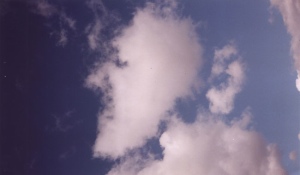MARIE: Oh, Idiot Savant— why stuff that provocative dental instrument into your mouth—impeding all possible “human speech”? (He takes it out. Pause)—Thank God, you’ve removed it.
IDIOT SAVANT: As a result, dear lady—am I no longer capable of saving us from magic words?
MARIE: But they occur very infrequently.
IDIOT SAVANT: Are we under attack, Madame?
MARIE: What makes chosen words— magic?
IDIOT SAVANT: Who among us is prepared for an explanation?
MARIE: (Pause, thinks) Me?
IDIOT SAVANT: Me?
It always pains me to miss any production by Richard Foreman. Unfortunately, this happens all too often as I am based in San Francisco, and he’s based in New York City. Whenever I plan to be in New York, one of the first things I do is check whether Foreman has something going on.
I orginally learned about Foreman’s work through the pages of a journal edited by Michael Kirby called The Drama Review. I still occasionally return to the December 1975 issue on New Performance & Manifestos which contains Foreman’s Third Manifesto for the Ontological-Hysteric Theater. It’s taken intensive reading and re-reading over many years to finally feel as though I can stand under the meaning of the manifesto.
Richard Foreman’s latest, and perhaps last, work for the theater is currently running at The Public Theater through December 20th and is called “Idiot Savant.” I’ve only experienced this work through the text of periodicals that have chosen to cover the event. This morning I finally got around to reading the New Yorker’s coverage. When the mainstream press writes about Foreman they have to budget at least half of the designated column inches to explain who Foreman is, what he does, and why it’s important and kind of entertaining. Without the establishment of a makeshift frame, a preface to the words describing the performance, the text that describes the performance would simply appear to be a recitation of a random flow of inner states and thoughts that occurred simultaneously with the performance of Foreman’s work.
Hilton Als, in his preface to his published thoughts on “Idiot Savant” quotes Foreman’s introduction to his 1989 play “Lava.”
“There are writers who despair that a gap exists between the self and the words that come, but for me that gap is the field of all creativity— it’s an ecstatic field rather than a field of despair…It’s the unfathomable from which every pours forth.”
The writer indemnifies himself with the construction of a frame within which to view and share the performance. The words of his text will need to cross a large gap, and in the end will not be a true representation of the events that unfolded on the stage on that particular night. The difficulty in trying to represent Foreman’s work is that Foreman’s performances don’t represent anything. They are the thing itself. There is no third thing about which both the performance and the writing about the performance can refer.
Foreman explains his approach in his Third Manifesto:
Most theatre, on the other hand, is dedicated to creating an “experience.” Sometimes that experience is thought of as an avenue to understanding. (For instance, an experience in a politically oriented play, which is designed to help one “understand” why workers do such and such, and the managers do such and such, etc.)
But an “experiencing” does not lead to the radical “understanding” I am concerned with. Here’s why. Experience of any sort is “recognizing.” I would not deny that anything called “art” has to end up in the thing called “spectator” as some kind of experience. But there is a difference between this last fact and the always misguided attempt to make the art experience be isomorphic with an OTHER experience-event.
We experience what we recognize—what we know. Even if the experience is the experience of “not-knowing” or “being confused” or anything else to which we can give a name. The task of art is to serve understanding… by trying to create a field which is isomorphic with what stands-under experience— which is not experience itself.
Now, what stands-under experience cannot be experienced, experience is not the mode by which we can know it.
What stands-under experience are the laws (processes) of perception and other laws-of-configuration of the universe.
My task is to make work, the structure of which is isomorphic with those laws. Then I will be standing-under experience.
Foreman’s work attempts to be present in the real-time moment. The gestures don’t refer to some other fictional reality, they are gestures that are happening right now. And to create something that can genuinely be perceived as new, the performance charts a course outside of the grooves of our comfortable, traditional, cultural narratives. Returning again to the Third Manifesto, Foreman contemplates the implications of physicist Paul Dirac’s work as it relates to the creation of performance works:
For instance: Dirac, Paul. His 1931 theory— (for me, the most useful MANTRA of our time). In which he postulates—
Space isn’t empty. It’s filled with a bottomless sea of electrons with negative mass (& negative energy). All available locations in space, filled with minus energy electrons, not interaction, no manifestation of their existence!
On occasion, a high-energy cosmic ray hits one of these “ghost” electrons and imparts its energy to it. So the ghost electron is then bumped out of the sea of non-existence and becomes a normal electron with positive energy and mass.
But that leaves a “hole” in the sea where it had been. The hole is a negation of negative mass, so is positive mass (also positive change). This hole (DIRAC predicts in ’31) would be a new kind of particle, having mass equal to and charge opposite to a normal electron (which is +mass and -charged.) An anti-electron.
But (he predicts) the anti-electron will be very short lived because a normal electron will soon be attracted to the “hole,” fall into it, and the two oppositionally charged electrons will immediately annihilate each other.
Most of the writing about Foreman’s work notes that the “subject” of the work hasn’t changed over the years, it’s always “about” the same thing. Of course, this is because it isn’t “about” anything, it “is” that thing itself— and since it isn’t a story, it’s not recognizable as one.
The pattern of creation described by Dirac describes both the activity and the subject of Foreman’s work. In Chapter 16 of Foreman’s text The Amateur Genius he writes:
The Amateur Genius was on a street where the brick surface of the wall confronting him did sparkle, desertd as the street was on the Sunday that it was; and The Amateur Genius tried to think about the brain roots that twisted into a very real antispace, spaced into the careful click that widened as idea on idea perfromed mutual erasure so that the writing The Amateur Genius did (and upon his very brain The Amateur Genius did write).
“—Write not the ideas,” spoke The Amateur Genius. “The ideas perform mutual erasure.”
“Write rather the brain-stem rush. So when that is written nothing is written. Or rather, the writing speaks so the weakened eye speaks a kind of internal stress and strain out of which pop the grapefruits of, dare I say it, a second world, a third world— (there are grapefruits that do thinking as well as other sweetness).”
Foreman toils endlessly to get to the present moment, the being of the act of creation, not a representation or a narrative about a thing, but the thing itself. The theatrical performance provides a rare opportunity to experiment with focused attention and the real-time moment. The work done by Foreman, Schechner, LeCompte, Breuer, Growtoski and others on the theory and practice of presentational performance provides a rich ground for understanding our newly emergent networked media environment.
When Hilton Als attempts to write about a Richard Foreman performance, the difficulty of his task mirrors the difficulty traditional journalism faces with the real-time network. We’re used to media reports that represent a series of events. The quality of the report is based on the degree to which the text is isomorphic with the event. With the speed-up to real-time and the connectivity of the networked media environment, we become participants in the thing-itself as it unfolds in time. You can hear the critique of this state of affairs from the perspective of the traditional press: There’s no objectivity, the representations are not accurate, they don’t match the reported, and checked, facts.
We should have concerns about this new media environment, this new stage on which we stand, but they aren’t those of objectivity and representational accuracy. The participant can have no standing in either of those causes. The journalist who situates himself outside the event—within a field of objectivity—intends to be invisible, to withhold both his presence and influence on the event itself. He believes that only through this distance can he produce a text that is isomorphic with the event itself. The journalist’s ethics have to do with accuracy of representation; the participant’s ethics have to do with what one chooses to do with an active or passive role in the action as it unfolds. Do you accelerate the action or oppose it? Do you ignore it or silently contemplate it. Do you route it to a private or public group? Do you produce a work in reaction to it? (Note how this is fundamentally different than the idea of the citizen journalist).
The common thread between Foreman’s performances and activity on the real-time network is that neither represents something else. They’re both the thing itself. It’s this shift from representation to presentation that opens a new world of possibilities (“dare I say it, a second world, a third world…”). Getting the hang of the new physics and economics of this space may take some time. The ethics of real-time mean that you’re a participant in an unfolding event— you aren’t invisible— and your actions (or lack of action) have consequences.
Comments closed











